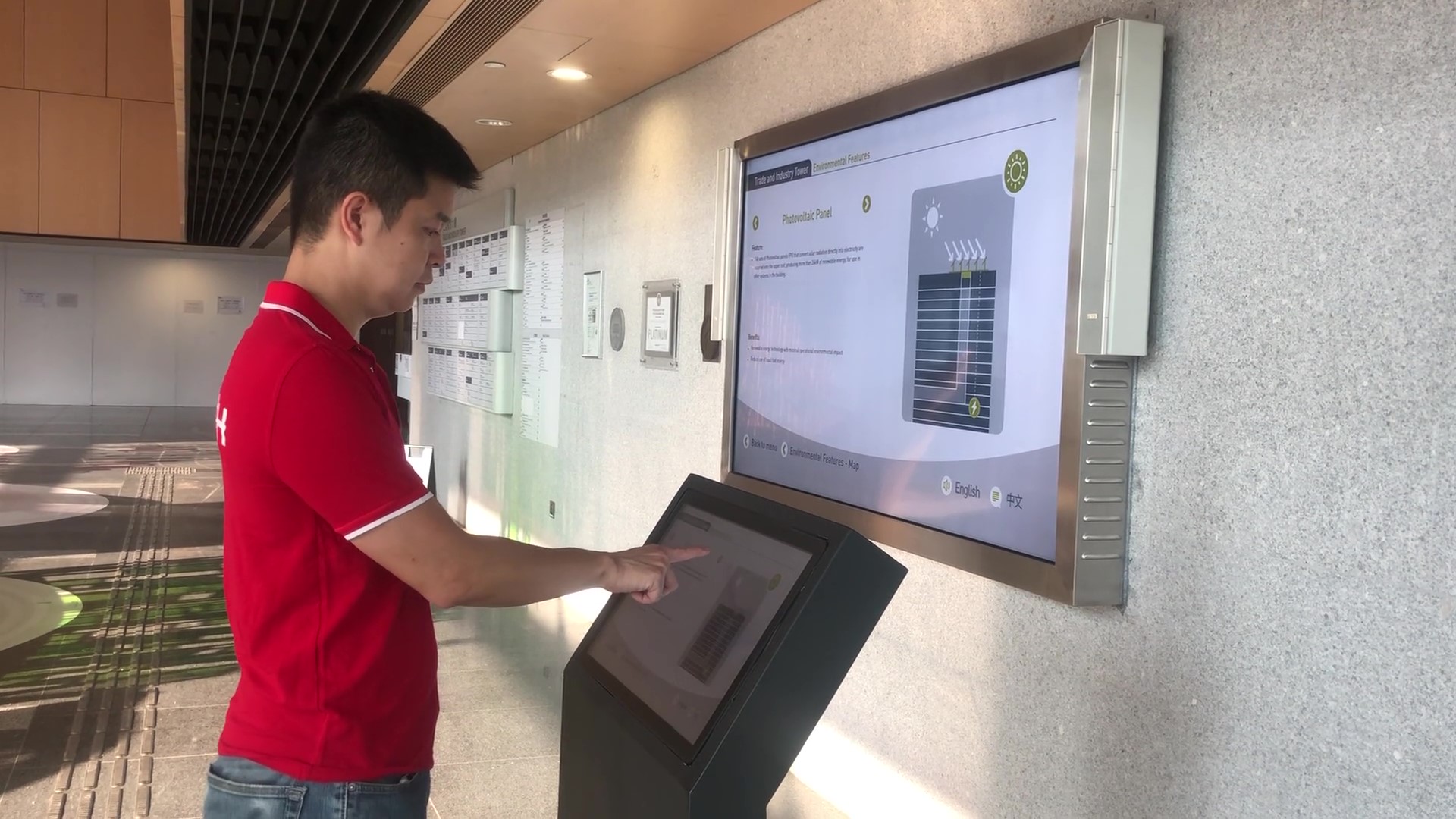Zytronic’s Contactless User Interface Enhances Safety at Hong Kong’s Trade and Industry Tower

At the North Apron of the Kai Tak Development Area, which covers the former airport site and spans the surrounding areas of Kowloon City, stands the Trade and Industry Tower (TI Tower). The building accommodates several government departments, including the Trade & Industry Department, Highways Department and Census & Statistics Department, and a community hall for local citizens to organize activities.
The 22-story, 54,000-square-meter building engineered by Arup officially opened in 2015 and received a Green Building Award for its emphasis on energy conservation during construction. The design employs various renewable energy technologies, including a photovoltaic system, and several energy-saving technologies, such as a solar hot water system, solar chimney, and daylight sun tubes.
The digital signage system within the lobby of the TI Tower uses two monitors. Mounted on the wall, the main monitor is 80” in size for easy viewing. The smaller 21” monitor, mounted on a podium beneath the larger display, touches interactive to enable visitors to browse through various interesting pieces of information related to the building, such as its design, environmentally sustainable features and awards. Keen to show the building’s green credentials to government staff and visitors more dynamically, Savills Guardian, the property and facility management company looking after the TI Tower, turned to Manuel Ling, Sales Manager, ASPIS Innovation Solutions, a long-time Zytronic partner and specialist systems integrator, for advice.
The general consensus is that a building achieves ‘net zero’ operational carbon when it matches all its energy use with self-generated zero-carbon renewable energy. The daily fixed energy consumption for the TI Tower covers everything from HVAC and permanent lighting to lifts, servers, and so on. With years of experience in developing numerous “Internet-of-Things” (IoT) systems, in addition to the Zytronic touchscreen technology integration, ASPIS also created a software package to collect and summarise data from the overall building management system (BMS) and to present information on the renewable energy generated and the building’s operational carbon emissions.
Although ASPIS could have used the original digital signage system to showcase building information, concerns were raised that having a touch screen in a busy public area could contribute to spreading infectious diseases – a concern fuelled further by the COVID-19 pandemic. Techniques typically used to enable touch interactivity without physically touching the surface rely upon either infrared or optical-based hardware mounted around the perimeter of the display. The disadvantage of such systems is that the required bezel protrudes from the screen’s surface and, ironically, can entrap dust and dirt, making it difficult to clean.
To overcome this, ASPIS replaced the original 21” touch sensor with Zytronic’s contactless touch sensor. ZyBrid® hover technology uses proprietary firmware to boost the projected capacitive touch sensitivity to levels enabling user interactions to be detected up to 50mm from the screen’s surface. In addition, no unsightly and potentially unhygienic bezels are required, so the touchscreen is easy to maintain and clean.
To minimize the possibility of accidental touches as users browsed through the information displayed, ASPIS also created special graphical user interface (GUI) content, increasing the size of the icons, and introducing wider ‘guard bands’ or space around each touch active button, ensuring an optimal user experience.
“After this digital signage system upgrade, visitors now get a better understanding of the TI Tower’s green construction design principles together with information regarding the renewable energy it generates and uses,” says Manuel Ling, ASPIS. “Using Zytronic’s innovative ZyBrid hover contactless pcap touch sensing development, ASPIS has been able to deliver a clean, low maintenance, self-service interface that works reliably, reassures users, and helps to reduce the risk of infectious diseases spreading through regularly used surfaces.”


